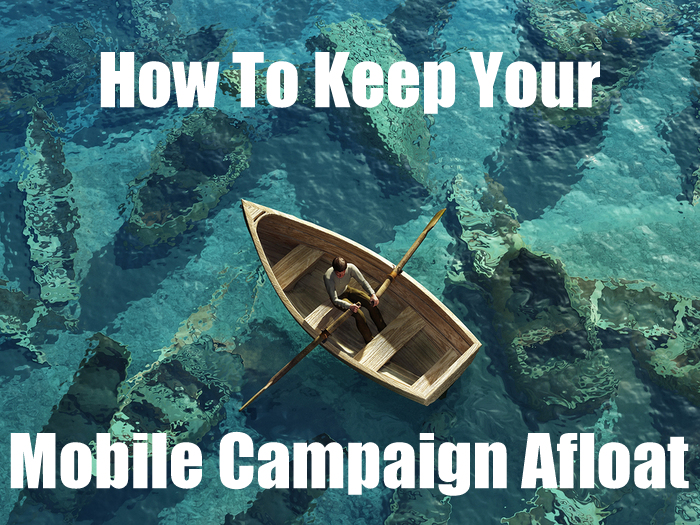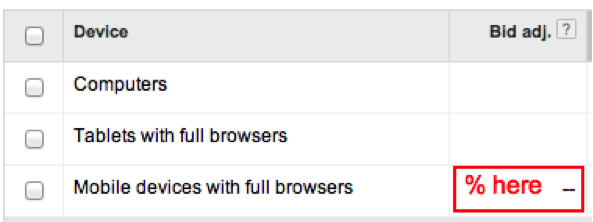
How Google’s “Enhanced Campaigns” Ruined Your Mobile Ads
Before we get into how enhanced campaigns have completely destroyed your mobile ads, lets focus on why this is important in the first place.
Why You Should Care
Your audience is spending more and more time on mobile devices. 90% of people use multiple web-connected devices each day. 77% of the time viewers watch television they’re not only watching the television! Instead, they’re looking at their smartphone or tablet while enjoying the background noise the cable shows provide.
Even when shopping, 67% of people use multiple devices and only 19% of the shopping they do is planned. The rest is spontaneous and likely due to online media stimulation (Source).
With more and more users using mobile devices for more and more activities, it is more important now than ever that businesses are able to effectively reach their potential customers.
There’s one glaring problem with monetizing these mobile trends… AdWords, the world’s largest advertising network, has forced advertisers to upgrade to “Enhanced Campaigns.” This “upgrade” means your business gets to pay more for mobile clicks, helping to line Google’s increasingly deep pockets with even more money.
What Has Changed
Targeting
Historically in AdWords, advertisers were able to completely exclude tablet and PC traffic, thus ensuring that all ad impressions were delivered to users using mobile phones.
This functionality has since been removed and advertisers are now left with only the option to adjust the mobile bid by a percentage of the Default Max CPC (seen below).
This means that our “mobile specific ads” that we’ve spent countless hours writing and perfecting, are likely going to reach tablet and PC users. Ultimately this means advertising to the wrong audience making our ads less effective.
That’s ok though, Google’s thought of a solution for this.
Ads
So Google took away our device targeting… fine. But at least they made a great way for us to ensure that our mobile specific ads still reach mobile users!
By checking this box, we’re telling Google that this is the ad we want to show mobile users.
Problem solved right?
Well.. Kinda.
Ad Rotation
As you likely know, AdWords has 4 ad rotation settings:
- Optimize for Clicks
- Optimize for Conversions
- Rotate Evenly (for 90 days then optimize for Clicks)
- Rotate Evenly Indefinitely
Since our primary objective inside AdWords is to produce the most conversions for our clients as possible, ad rotation settings are generally configured to “Optimize for Conversions”.
This is where the problem lies. Through various tests and experiments, we have come to the conclusion that ad rotation outweighs mobile preference.
What does this mean?
Say you’ve selected a mobile specific ad as “mobile preferred”. If your ads are rotating evenly, your mobile preferred ad will show on mobile devices the vast majority of the time.. as they should. If you change your ad rotation to “Optimize for [Clicks/Conversions]” Google ignores your device preference and simply displays the ad more likely to be clicked on / convert.
Verdict
So what we’ve learned is the following:
- We are forced to advertise on tablets/PCs by default.
- This causes more people to advertise on mobile, driving competition and costs up.
- We can no longer ensure our mobile specific ads reach our mobile users without sacrificing performance of our tablet/PC campaigns.
- The inability to separate mobile vs. tablet/PC campaigns can lead to inefficiency.
The Bright Side
As we gripe and groan about this change to Enhanced Campaigns, we know that eventually, this grand change will be forgotten and it will simply become known as “the norm”.
We can also consider what Enhanced Campaigns promise to bring us in the future:
- Better Across Device Attribution
- Where are users first seeing our ads vs where are they converting?
- More Advanced (Potentially Sequential?) Ad Targeting
- If user sees ad “A” on mobile, show ad “B” on tablet/PC
Really the possibilities are expansive, but for now, we need to spend time overcoming the early hurdles created by the change.
If you’re interested in learning how we can help with your PPC campaigns, feel free to browse our paid media management page and give us call.
Most newsletters suck...
So while we technically have to call this a daily newsletter so people know what it is, it's anything but.
You won't find any 'industry standards' or 'guru best practices' here - only the real stuff that actually moves the needle.









